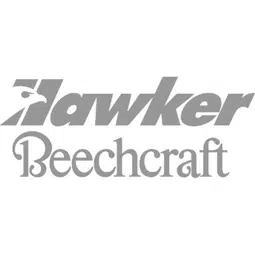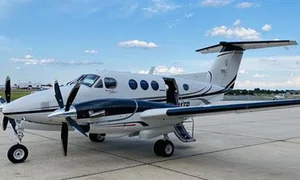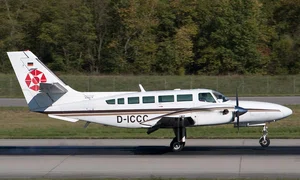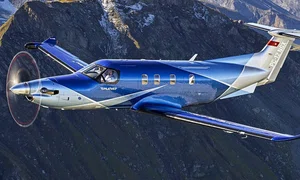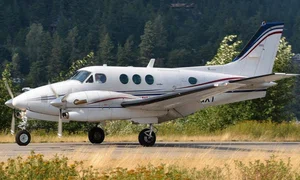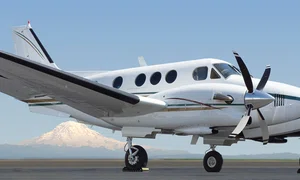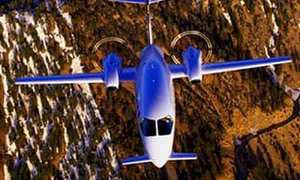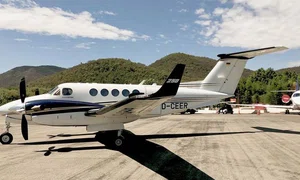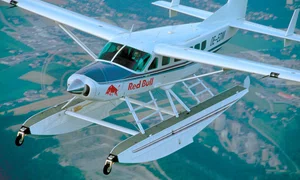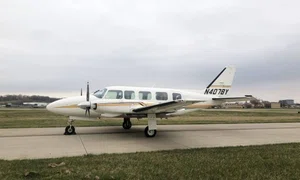The Beechcraft King Air family is part of a line of twin-turboprop aircraft produced by Beechcraft. The King Air line of aircraft is comprised of a number of models that have been divided into two families; the Model 90 and 100 series are known as King Airs, while the Model 200 and 300 series were originally marketed as Super King Airs. Since production began in 1964, over 3,100 aircraft have been built. Production is currently still active, giving the Beechcraft King Air the longest continual production run of any civilian aircraft of its class. Beechcraft created several variants of their original design, including the King Air F90 introduced in 1979.
The King Air F90 is a combination of the Model 200 fuselage and T-tail and Model E90 wings. It is powered by two Pratt & Whitney PT6A-135 turboprop engines with 750 shp. The aircraft was built with standard landing gear and optional high-flotation gear. Available modifications provide aft body strakes for improved handling/yaw damping, high-flotation gear doors, a Power Props four-blade propeller modification, and Speed Stacks to increase speed and help direct exhaust. The cockpit has a panel consisting of King Air F90 includes dual Collins VHF 20A comms, dual VIR 30 navs, DME, ADF, Sperry SPZ 200A flight director/autopilot, dual Collins TDR 90 transponders, and Bendix RDR 1200 color weather radar.
Production of the King Air F90 ended in 1982, with a total of 32 built.
The twin-engine King Air F90 is one of the most dependable charter planes available.
Offering a pressurized cabin with room for up to 7 passengers, the King Air F90 is ideal for short hop flights for individuals and small groups seeking an economical air charter.
The Beechcraft King Air family is part of a line of twin-turboprop aircraft produced by Beechcraft. The King Air line of aircraft is comprised of a number of models that have been divided into two families; the Model 90 and 100 series are known as King Airs, while the Model 200 and 300 series were originally marketed as Super King Airs. Since production began in 1964, over 3,100 aircraft have been built. Production is currently still active, giving the Beechcraft King Air the longest continual production run of any civilian aircraft of its class. Beechcraft created several variants of their original design, including the King Air F90 introduced in 1979.
The King Air F90 is a combination of the Model 200 fuselage and T-tail and Model E90 wings. It is powered by two Pratt & Whitney PT6A-135 turboprop engines with 750 shp. The aircraft was built with standard landing gear and optional high-flotation gear. Available modifications provide aft body strakes for improved handling/yaw damping, high-flotation gear doors, a Power Props four-blade propeller modification, and Speed Stacks to increase speed and help direct exhaust. The cockpit has a panel consisting of King Air F90 includes dual Collins VHF 20A comms, dual VIR 30 navs, DME, ADF, Sperry SPZ 200A flight director/autopilot, dual Collins TDR 90 transponders, and Bendix RDR 1200 color weather radar.
Production of the King Air F90 ended in 1982, with a total of 32 built.
The twin-engine King Air F90 is one of the most dependable charter planes available.
Offering a pressurized cabin with room for up to 7 passengers, the King Air F90 is ideal for short hop flights for individuals and small groups seeking an economical air charter.
